Embroidery Thread Color Charts
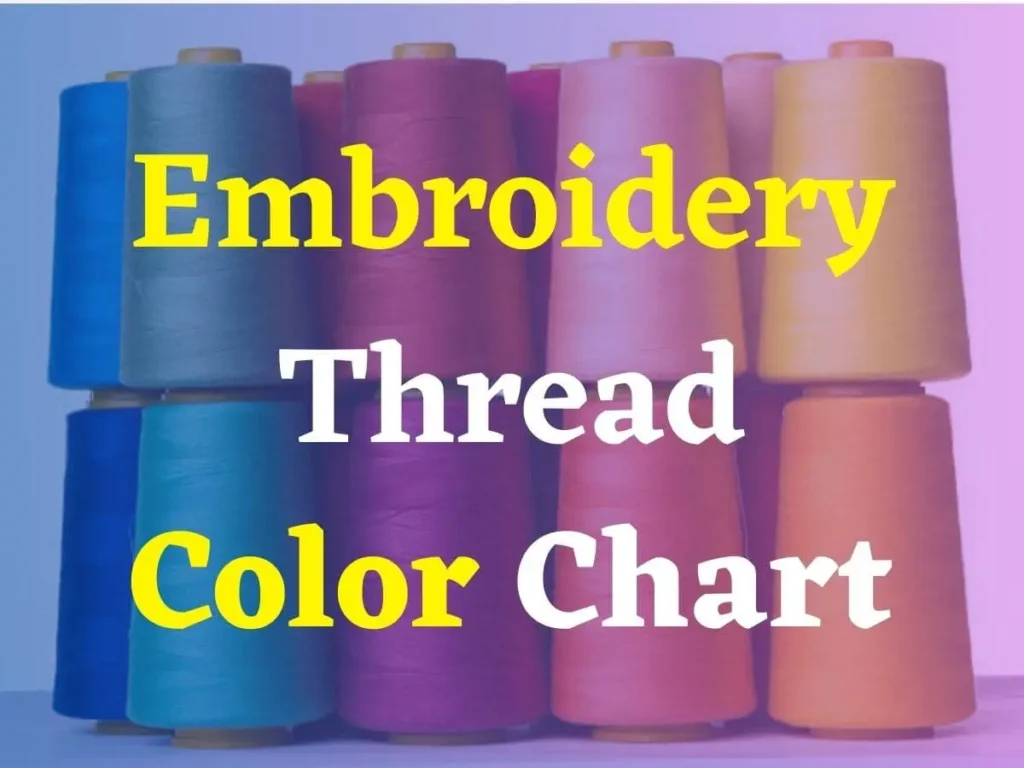
When working on embroidery projects, achieving the exact thread color match is crucial, especially when switching between different brands or accounting for varying lighting conditions. Even a slight color mismatch can impact the overall appearance of the final design.
This article will discuss how to use embroidery thread color charts effectively and explain how to cross-reference between brands, ensuring color accuracy.
Thread Color Options / Frequently Used Thread Colors
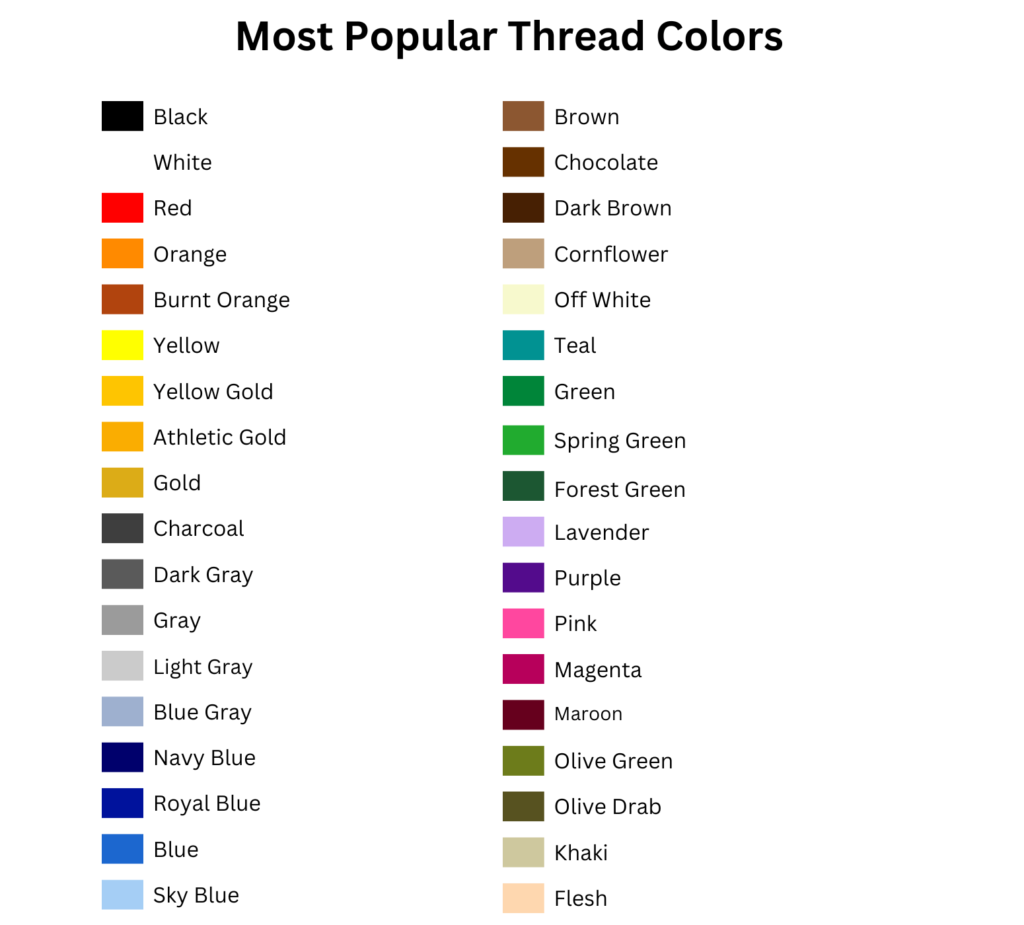
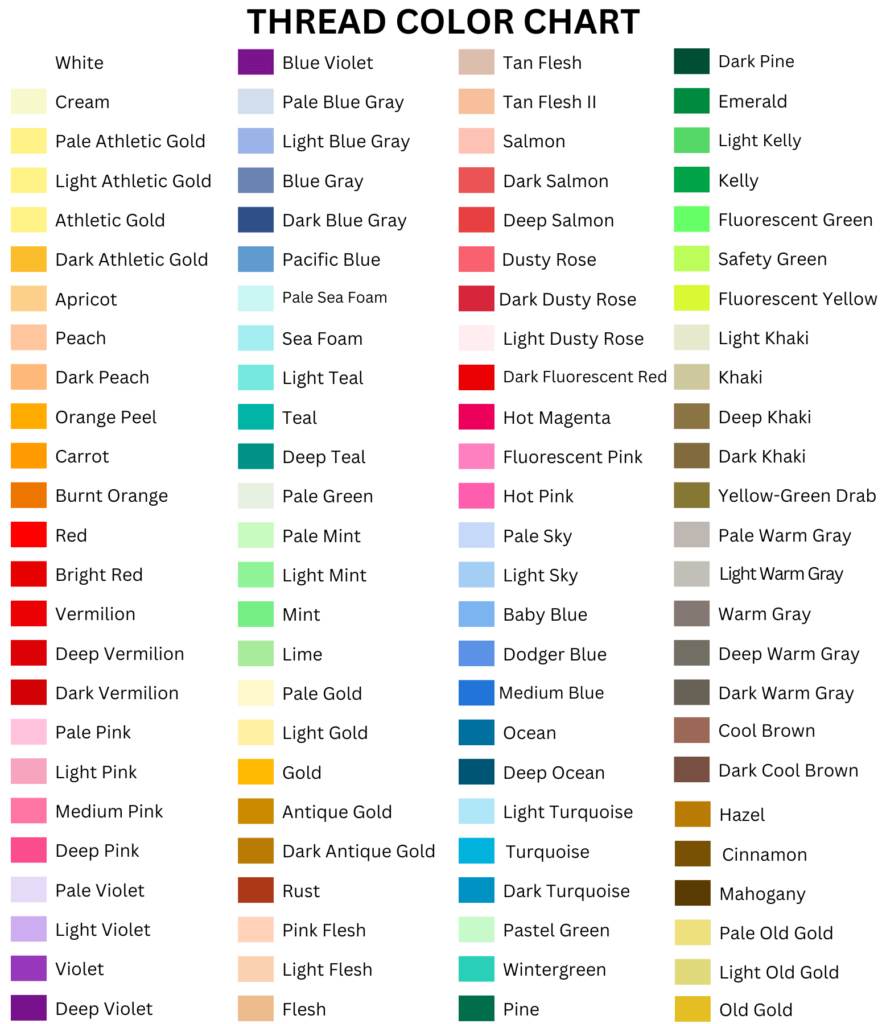
Complete Thread Color Chart
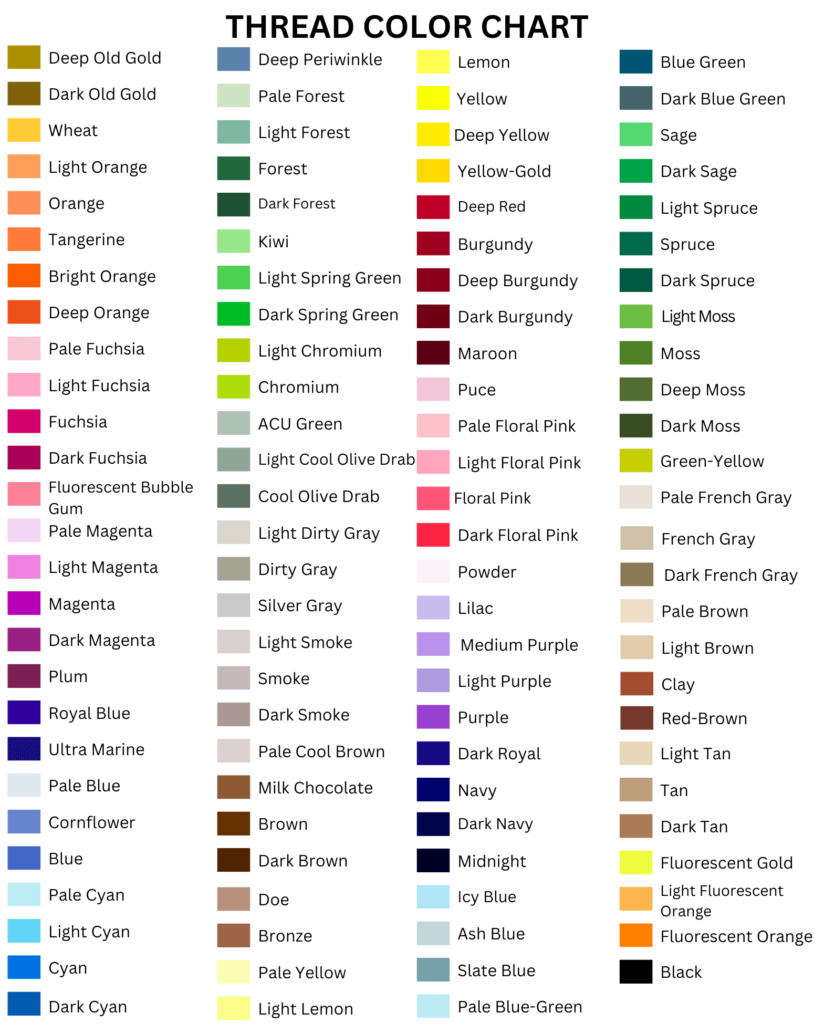
Thread colors are available in a vast majority with over 250 different shades across popular brands. These color options give embroiderers endless possibilities to bring their designs to their desired look.
But as you know, with so many colors and shades available it becomes crucial to match the thread color to the design’s requirements. The wrong pick will alter your embroidery’s final look.
To make the final look ready as per the requirements, embroiderers rely on color charts that guide them in selecting the right color. Once they are done with color selection, they can translate their vision perfectly into thread form.
Colors like white, black, and shades of red, blue, and green, often appear in designs. So, every embroiderer must include these colors in their embroidery collection.
Additional Thread Color Options
Metallic Thread
Metallic threads are expensive and often used to design a specific part of the project. It’s perfect for designs that require a bit of sparkle. Metallic threads are made with a blend of synthetic fibers and metallic elements. These threads come up with multiple colors but the most popular are silver and gold.
Neon Thread
For a brighter look, neon threads are the perfect match as they bring a bold, vibrant pop of color to embroidery projects. These threads come in bright, fluorescent shades like neon yellow, green, pink, orange, and blue, making them ideal for high-visibility embroidery on sportswear, children’s clothes, or promotional items.
Military Subdued Colors
These threads are a mixture of colors that are ideal for creating embroidery designs with a more tactical or professional aesthetic. These colors include shades of olive green, khaki, beige, desert, ACU light and dark, dark brown, black, and grey, which are commonly used in military patches, uniforms, and outdoor gear.
Glow-in-the-Dark Thread
If you want to do some kind of fun while playing with these threads then Glow-in-the-dark thread offers a fun and creative way to add unique effects to embroidery projects. This thread absorbs light during the day and emits a soft glow in low-light or dark conditions.
Custom Thread Colors
You can select thread colors based on your personal preferences because, In the end, the final look will determine the quantity and quality of thread colors. Similarly, to create personalized embroidery projects, you have plenty of thread colors to choose from. So, if you are looking for the perfect logo for brands, businesses, or individuals, you can achieve it with custom thread colors.
Twill / Fabric Background Color Chart
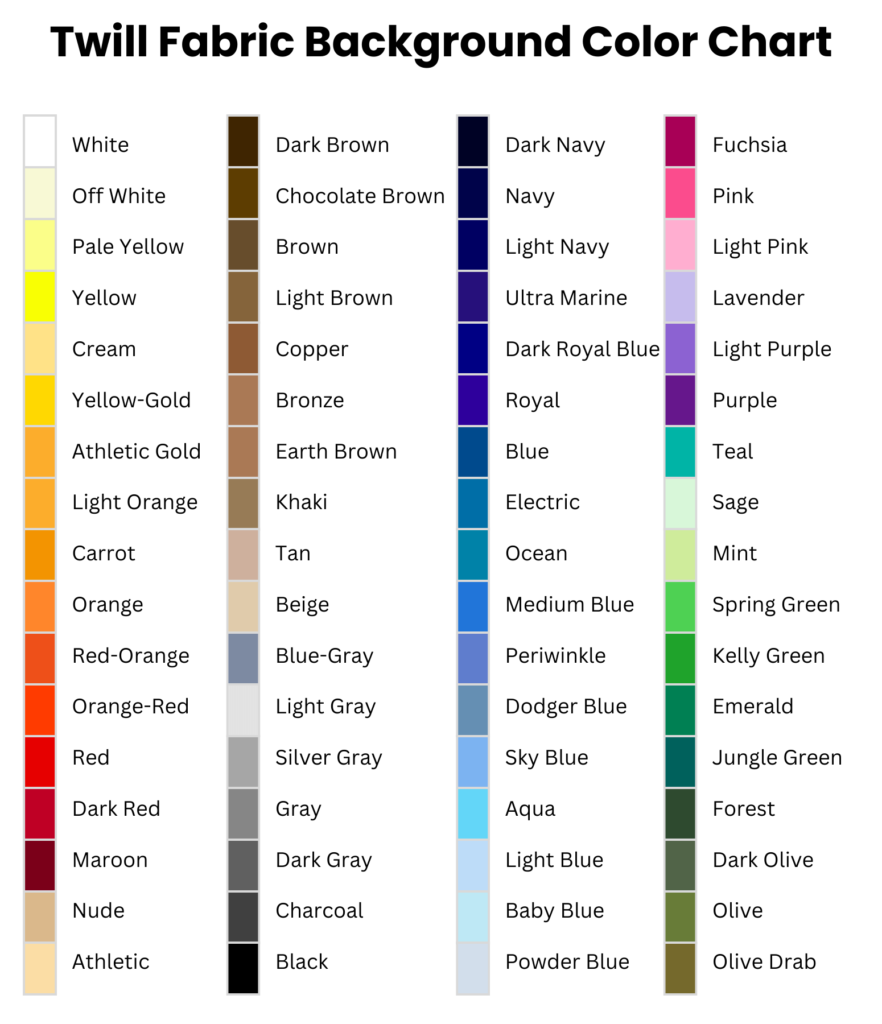
Twill or fabric background color plays a crucial role in determining how the thread colors will stand out or blend in. It helps users find the best background color for any specific project.
The main specialty of twill fabric is its durability and smooth surface. There are plenty of twill options available but cotton twill is used in almost 99% of custom patch orders.
Let Today Patches introduce you to our recommended colors for your embroidery projects like off-white, dark brown, dark navy, navy, light brown, copper, bronze, royal, ocean, and electric.
Additional Twill Options
- Polyester
- Velveteen
- Felt
- Camouflage
- Denim
- Reflective
- Flame Resistant
Special Options and Patch Customizations
3-D Embroidery
3-D embroidery, also known as dimensional embroidery, is used to add depth and texture to designs. This technique uses thicker thread, foam, or specialized stitches to create a raised effect. 3-D embroidery is perfect for logos, text, and intricate designs and commonly used in hats, jackets, and promotional items.
Crystals & Rhinestones
Crystals & Rhinestones are decorative elements and are often used to enhance the visual appeal of garments, accessories, and home decor items. Similarly, to highlight a specific area of the design, crystals, and rhinestones can be placed within embroidery designs to create eye-catching highlights that draw attention.
Lights & L.E.D.s
Lights and LEDs are a modern and innovative embroidery method that brings designs to life in a whole new way. L.E.D. lights can be sewn directly into the fabric. It’s important to consider the design and placement carefully when you are integrating lights into embroidery.
Tips for Choosing Thread Colors
The thread colors play an important role in the final look of the embroidery. Choosing the wrong thread color can break the overall design of the product. So, you need to make sure that the thread colors provide good visibility against the fabric background.
Such as high-contrast colors enhance the readability and overall impact of text designs. You can use light threads with dark fabrics or vice versa to create a dynamic and eye-catching look.
Also, consider the aesthetic of your design as colors sometimes express our feelings and have a significant effect on our decisions. Colors like blues and greens can Inspire a sense of calm, while reds and yellows convey energy and warmth.
FAQ’s
What are the most popular thread colors used in custom patches?
The most popular colors are black, white, red, blue, and yellow.
What is the process for custom color matching at Stadri Emblems?
First, select a color from a color chart and match it to the desired thread shade for accuracy.
What should I consider when choosing thread colors for my patch design?
You should consider factors like visibility, contrast with the background, brand colors, and your desired final look.
What are the primary, secondary, and tertiary colors commonly used in embroidery?
Primary colors are red, blue, and yellow while secondary colors are green, orange, and purple, and tertiary colors are combinations of primary and secondary colors
When are metallic and neon colors appropriate for embroidery projects?
Metallic colors are appropriate for adding shine and elegance to formal while neon colors are ideal for vibrant, eye-catching designs
When are glow-in-the-dark threads suitable for embroidery projects?
When it requires visibility in low-light conditions, such as children’s clothing,
What is the most popular twill background color for embroidery?
It will depend upon your personal preferences but navy blue stands out as the most popular twill color for embroidery.
